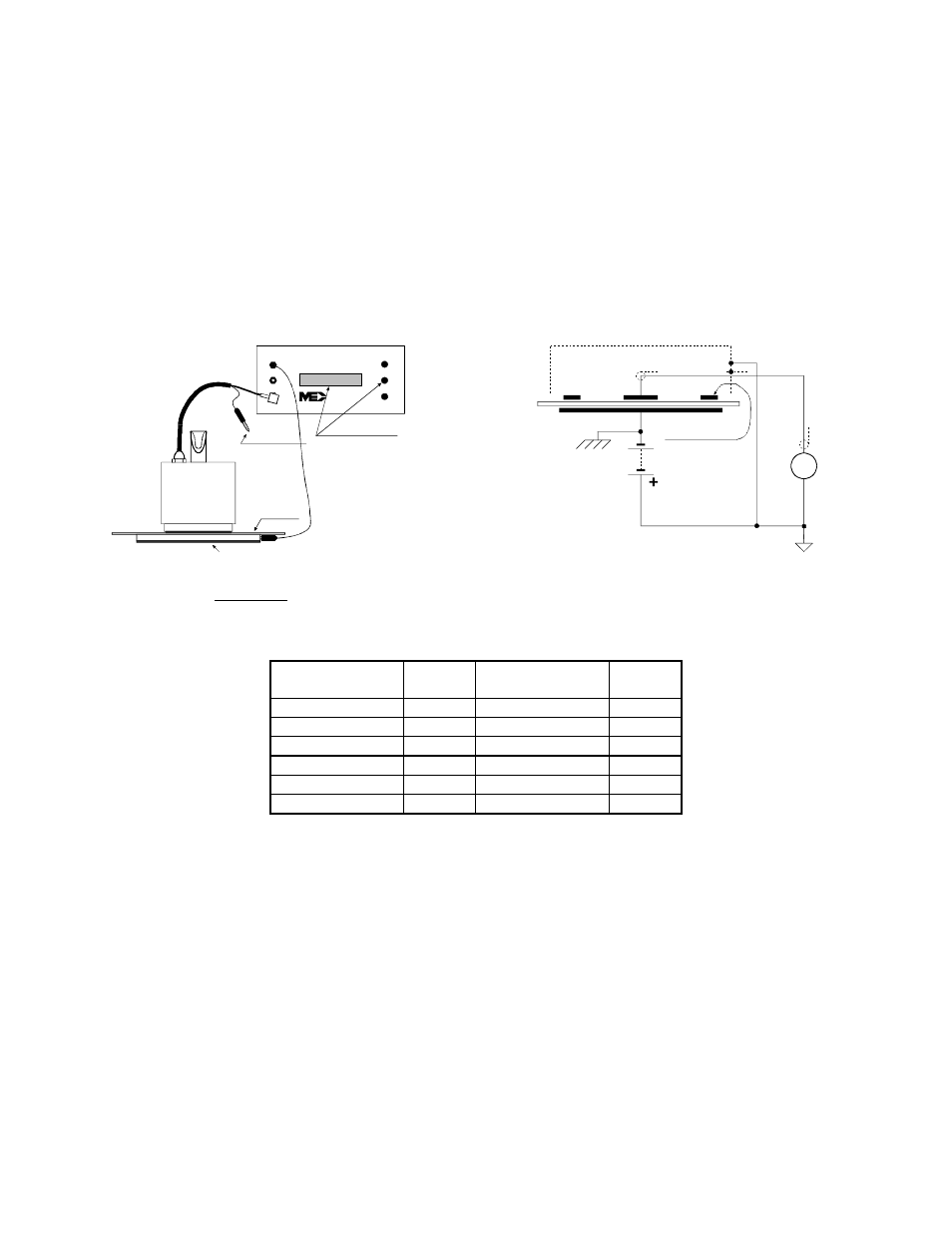Monroe Electronics Resistivity Meter - Portable - Surface - model 272A User Manual
Page 10

10
The above information is presented as an overview of some of the complications involved in the
use of the concentric or guarded ring type electrode. Either of the standards should be
consulted for further details.
SIMPLIFIED METHOD
Most materials commonly being tested in today's world of ESD awareness are intended not to
be electrically insulative. For specimens that have negligible surface leakage, an unguarded
measurement based on the actual area of the (1.2" dia.) center electrode greatly simplifies the
calculations. For material samples less than 0.060" thick, the errors introduced into an
unguarded measurement are usually small enough to be negligible. The connections for
unguarded measurements are given in Figure 5. Factors for converting meter readings (in )
directly to volume resistivity (unit cm) are presented in Table 1.
Figure 5 Figure 6:
Connections for Un-guarded Measurement of Schematic Representation
Volume Resistivity
Material
Thickness
Factor
Material
Thickness
Factor
0.005" (0.13mm) 575
0.035" (0.89mm) 82
0.010" (0.25mm) 287
0.040" (1.02mm) 72
0.015" (0.38mm) 192
0.045" (1.14mm) 64
0.020" (0.51mm) 144
0.050" (1.27mm) 57
0.025" (0.64mm) 115
0.055" (1.40mm) 52
0.030" (0.76mm) 96
0.060" (1.52mm) 48
Table 1
TO USE THIS TABLE-
1) Arrange test setup as in Figure 5.
2) Set Model 272A to "ON".
3) Select "OHMS". The " " symbol will appear in the display.
4) Select measuring voltage (10V or 100V).
5) Record the reading and the material thickness.
6)
Multiply the reading by the factor given in the table for the value of volume resistivity in
cm.
272A
NOT CONNECTED
96101A
INSULATED SIDE DOWN
SPECIMEN
SET TO INDICATE
A
CASE
CKT.
COMM.
NOTE NO CONNECTION
TO GUARD RING
